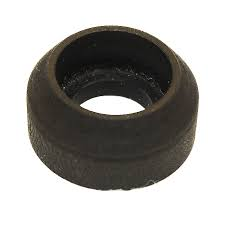Are you working on a project that involves cables and wires? If so, you may have come across the term "cable rubber glands". Cable rubber glands are essential components used to secure and protect cables as they pass through panels or enclosures. In this blog post, we will explore the different types of cable rubber glands and their uses, so you can choose the right one for your specific needs.
1. Standard Cable Rubber Glands
Standard cable rubber glands are the most common type and are suitable for a wide range of applications. They provide a watertight seal and strain relief for cables, making them ideal for outdoor or harsh environments. You can use them in electrical enclosures, control panels, or equipment cabinets.
2. Armored Cable Rubber Glands
Armored cable rubber glands are designed specifically for armored cables, which have a protective layer of metal or plastic. These glands provide additional protection and strain relief for the cables, ensuring they remain secure and protected in high-risk environments or areas prone to vibrations.
3. Multi-Hole Cable Rubber Glands
If you need to pass multiple cables through a single panel or enclosure, multi-hole cable rubber glands are the perfect solution. These glands have multiple holes or slots, allowing you to route several cables without compromising the seal or integrity of the installation. They are commonly used in server rooms, data centers, or any application where cable management is crucial.
4. Metric Cable Rubber Glands
Metric cable rubber glands are designed to meet international standards and are commonly used in European countries. These glands ensure a tight seal and strain relief for metric-sized cables, providing a reliable solution for various industries and applications.
5. Threaded Cable Rubber Glands
Threaded cable rubber glands have a threaded design that allows for easy installation and removal. They are suitable for applications where cables may need to be frequently added, removed, or replaced. These glands are commonly used in industries such as telecommunications, automation, or HVAC systems.
6. Flame Retardant Cable Rubber Glands
In environments where fire safety is crucial, flame retardant cable rubber glands are essential. These glands are made from materials that are resistant to high temperatures and flames, ensuring the safety and integrity of the cable installation. They are commonly used in buildings, factories, or any application where fire protection is a concern.
7. EMC Cable Rubber Glands
EMC (Electromagnetic Compatibility) cable rubber glands are designed to provide electromagnetic shielding and protection against interference. They are commonly used in applications where electrical noise or signal interference may occur, such as in the automotive, aerospace, or medical industries.
Choosing the right cable rubber gland for your project is essential to ensure the safety, protection, and functionality of your cables. By understanding the different types of cable rubber glands and their uses, you can make an informed decision and select the most suitable option for your specific needs. Whether you need standard glands for general applications or specialized glands for specific environments, there is a wide range of options available to meet your requirements.


0 Comments